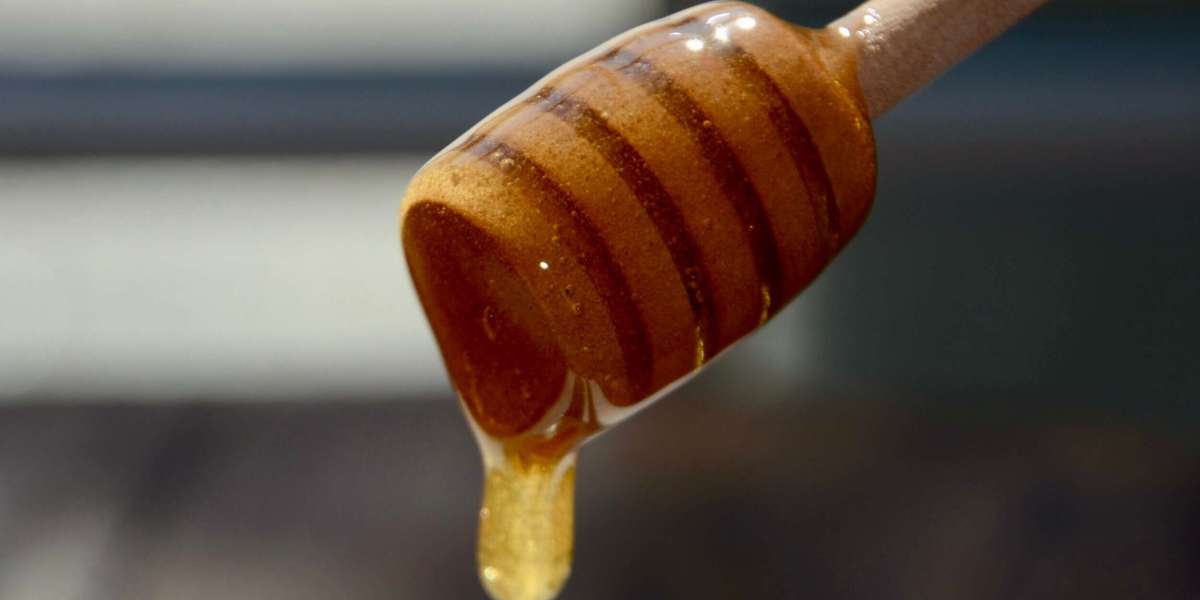Honey is one of nature's most treasured sweet treats that has been prized by cultures all around the world for thousands of years. This thick, syrupy nectar produced by honeybees offers a host of potential health benefits and unique culinary uses.
However, not all honey is created equal. While most people are familiar with the honeycomb for sale you typically find on grocery store shelves, an increasing number of consumers have started seeking out an alternative product called "raw" honey.
But what exactly is raw honey? How does it differ from the regular honey most of us are accustomed to? Is one truly better than the other, or do they each have their own set of advantages and disadvantages?
What is Regular Honey?
The honey you'll find bottled or packaged on most supermarket shelves is considered "regular" in the industry. This is the type most consumers are familiar with and it accounts for the vast majority of all honey production and sales across the world.
Regular type undergoes several key processing steps after being extracted from the honeycomb by beekeepers:
Filtering: Raw, freshly extracted honey contains trace amounts of beeswax, pollen, propolis (bee glue), and other small particles. Most regular honey is filtered to remove as many of these particulates as possible using a very fine mesh or muslin filter.
Heating: Raw honey straight from the hive exhibits a thick, opaque consistency. To make regular liquid honey, it's heated up to around 160°F (71°C) to allow any remaining suspended particles and microscopic air bubbles to rise and be skimmed off. This heating process also extends the shelf life.
Additional Processing: In some cases, additional steps like pasteurization may also take place to allow bottlers more control over the color, taste, aroma, and consistency of the end product. Some low-quality regular honey may also have fillers or artificial additives.
The result is a honey that has an extremely smooth, clear liquid texture that pours easily and stays liquid over long periods.
What is Raw Honey?
On the opposite end of the spectrum, raw honey either goes straight from the extraction process in the hive to being packaged or undergoes only very minimal processing. Raw honey is sometimes also marketed as:
- Unprocessed Honey
- Unpasteurized Honey
- Pure Honey
- Whole Honey
According to purist definitions, raw type retains all of the natural components found in fresh honey:
- Pollen grains
- Honeycomb wax particles
- Propolis (bee glue)
- Bee pheromones
- Living enzymes
- Vitamin/mineral complex
Raw, unheated, unprocessed honey is much thicker in viscosity compared to bottled liquid variations. It tends to have more of a creamy, opaque appearance due to all the natural particles in suspension.
Commercial vs. Local Sources of Raw Honey
When it comes to purchasing raw honey, there are a couple of main sources to be aware of:
Commercial Bottlers
Increasingly many mainstream commercial producers and honey bottlers are starting to offer raw honey products line to cater to consumer demand. These tend to be widely distributed brands available in major retailers and supermarkets.
While labeled as "raw" and minimally processed, it's tough to know exactly where and how this larger-scale commercial raw honey is produced and what standards it meets. It may still see some degree of gentle heating or micro-filtration that technically makes it not 100% raw per the purist definition.
Local Beekeepers
Your other option is to source raw honey directly from small producers or local beekeepers who sell directly to consumers. Buying from a trusted, reputable beekeeper who can validate their practices and processes is your best assurance of getting a truly 100% raw and unprocessed product.
Local raw honey can often be purchased at farmer's markets, roadside stands, apiaries, or directly from the beekeeper's home. The downside is that availability and selection may be limited depending on your location and what local flowers are in bloom.
Key Differences Between Raw and Regular Honey
Now that we've defined exactly what raw and regular honey is, let's break down and examine some of the key differences between the two in several important areas:
Processing and Filtration
This is the core point of distinction between raw and regular honey. The regular type is finely filtered to remove all particulate matter and is also heated to improve appearance, and viscosity, and extend shelf life.
Raw honey, on the other hand, goes through little to no processing. It retains pollen, beeswax particles, propolis, and air bubbles/foam suspended throughout giving it that cloudy, creamy appearance and texture. No heat is applied that would destroy the natural nutritional profile.
Texture and Appearance
Due to the lack of micro-filtering and heat processing, raw honey tends to be very thick, opaque, creamy, and filled with suspended particulate matter that settles over time. It can crystallize and turn solid.
Regular processed honey has a crystal-clear transparency, a smoother and more pourable liquid viscosity, and no visible particles thanks to extensive filtration and controlled heating.
Flavor and Aroma
For many raw honey advocates, the rich, bold, and more intensely aromatic flavors of raw unprocessed honey are a major selling point. They feel that extensive filtering, pasteurization, and processing can mute or remove delicate nuances of flavor and aroma.
Without processing, the complex natural flavors, floral notes, and sometimes funky or fermented undertones come through stronger in raw honey. People describe raw honey as tasting more "pure" and intense compared to regular honey which tends to have a more subdued and uniform character.
Nutritional Value
Here are some of the potential nutritional advantages claimed for raw honey:
- Higher antioxidant levels
- Higher pollen content (bee pollen has its nutrients)
- More bee propolis (which has antimicrobial properties)
- Greater amino acid content
- More vitamin/mineral content retained
- Higher antibacterial/antimicrobial properties
- Amylase enzymes for easier digestion
- Bee pheromones and royal jelly for antibiotics/immunity
Conclusion
If you want honey with all its natural goodness, choose raw honey. It keeps more of its natural stuff, like vitamins and enzymes. At Smiley Honey, we’re the best place to buy honey for sale at really good prices. You can find all your favorite honey products here, and we promise you'll get the best deals!
FAQs
How do the tastes of raw and normal honey differ?
Raw honey has a stronger, more complex, and unique flavor with a floral and sometimes even a bit sour taste. Normal honey tends to have a more plain and mild taste.
Which one is healthier, raw or normal honey?
Raw honey is generally considered healthier because it keeps more vitamins, minerals, antioxidants, and good enzymes that get lost or reduced when processing normal honey.
When would you use raw honey vs normal honey?
Raw honey is great for adding special flavors and keeping nutrients, while normal honey works well for regular cooking, baking, and everyday sweetening.



